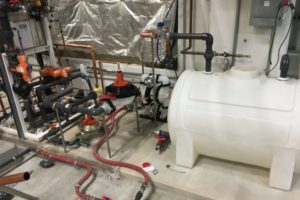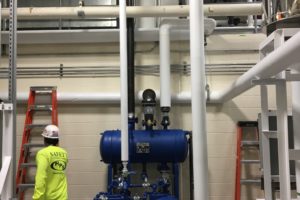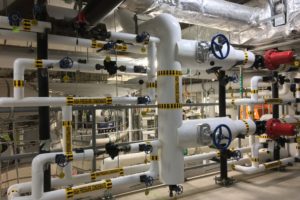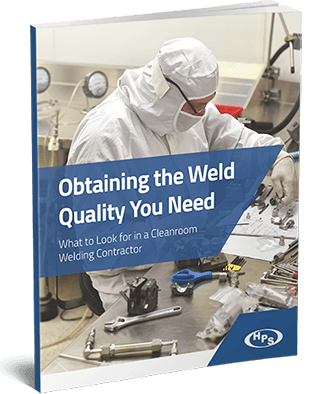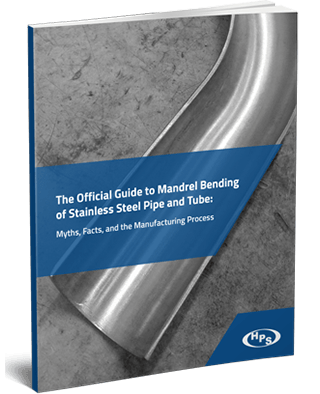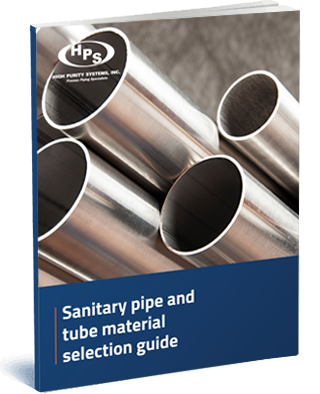Infrastructure inside pharmaceutical manufacturing facilities never goes unchanged for long. Unlike Ron Popeil’s Showtime Rotisserie, you can’t just “set it and forget it.”
As production requirements change and technologies advance, a facility’s processing equipment—and the miles of piping tying it all together—stay in a near-constant state of change.
This was the case in our customer’s facility in Maryland, where two new processing skids were scheduled to replace old ones.
Our crews modified a host of existing mechanical systems to make room for the new equipment before fabricating, installing and piping to tie it in place. And they had to do it without disrupting ongoing operations.
The challenge
The existing process skids in this facility were instrumental in the manufacturing of products found in many medicine cabinets.
But after 20 years, those skids had reached the end of their life cycle. The two new skids our customer had ordered to replace them would add production capacity to the facility—but they had to be tied in first.
The challenge was two-fold. First, the new skids would not fit into their designated space in the facility without extensive modifications to several existing mechanical systems. Second, new rigging and piping would be required to tie the new skids into existing facility services once they were set in place.
Importantly, some of the rigging work needed to be done at height. And, the work would be completed during normal facility operation; even the briefest interruption of production was out of the question.
The strategy
We were selected for the job on the strength of our existing long-term relationship with this customer. Over the last 20 or so years, our crews have delivered 331 fabrication and installation projects in their facility.
It would be a six-month job.
The first phase required modification of existing systems including:
- HVAC ductwork
- Emergency eyewash station relocations
- Backflow preventer relocation
The second phase entailed setting the skids in place and completing 31 tie-ins to the following existing services:
- Steam
- Steam vents
- Chilled water
- Soft water
- Instrument air
Our team employed laser scanning and building information modeling (BIM) to garner an accurate plan of the work environment and build models of the new skids based on data from the skid manufacturer. The combination of precise measurements and detailed models allowed our shop team to fabricate around 70% of the new system piping in our shop instead of in the field, reducing overall project cost and simplifying installation.
Each skid required 11,000 pounds of rigging, much of which was installed at height. This added another degree of complexity to an already-complicated project, but the risks associated with working at height were minimized by the fact that more than two-thirds of the required welds had been completed in our shop in advance.
The requirement that our installation not disrupt facility operations meant we had to hot tap into a line to add valves without taking it out of service. The challenge was that the line was located near the ceiling just beneath other lines which also could not be moved or shut down. This space restriction meant our craftsmen needed to put their hot tap machine in at an odd angle to successfully tap into the line.
That was the relatively easy part. The harder part was fabricating custom fittings to get the piping back square. The fittings needed to connect the odd-angle coming off the valve on the hot tap to a vertical run that then led to the ceiling rack and eventually tied into the new skid.
We also pre-fabricated a steam station that, once installed, provided easier access to the system’s valves and components.
In total, our team installed 1,600 linear feet of piping. The wide range of work this job required skilled SMAW welding and entailed required working with many different materials, including stainless steel pipe and tube, carbon steel pipe, copper pipe and PVC pipe. All work passed visual weld inspections and system pressure tests.
It all occurred without disrupting facility operations.
The result
Successful delivery of this system modification and skid tie-in project hinged on three key factors.
First, the craftsmen working on this project needed to be familiar with the wide variety of systems and materials involved in this project.
Second, it was also imperative that they knew the ins and outs of this customer’s biopharmaceutical facility. They know the place like the back of their hand, and it helped them deliver high-quality work safely and on-schedule.
Finally, skillful project management was essential. Without it, there would have been no way the project was delivered in time and without shutting down production even once over six months.
In each case, High Purity Systems delivered with uncommon quality and care. If that’s the kind of work you expect from a general mechanical contractor, we should talk.
Contact High Purity Systems
Have a question about a piping challenge? Want to discuss an upcoming project? Let’s talk.




